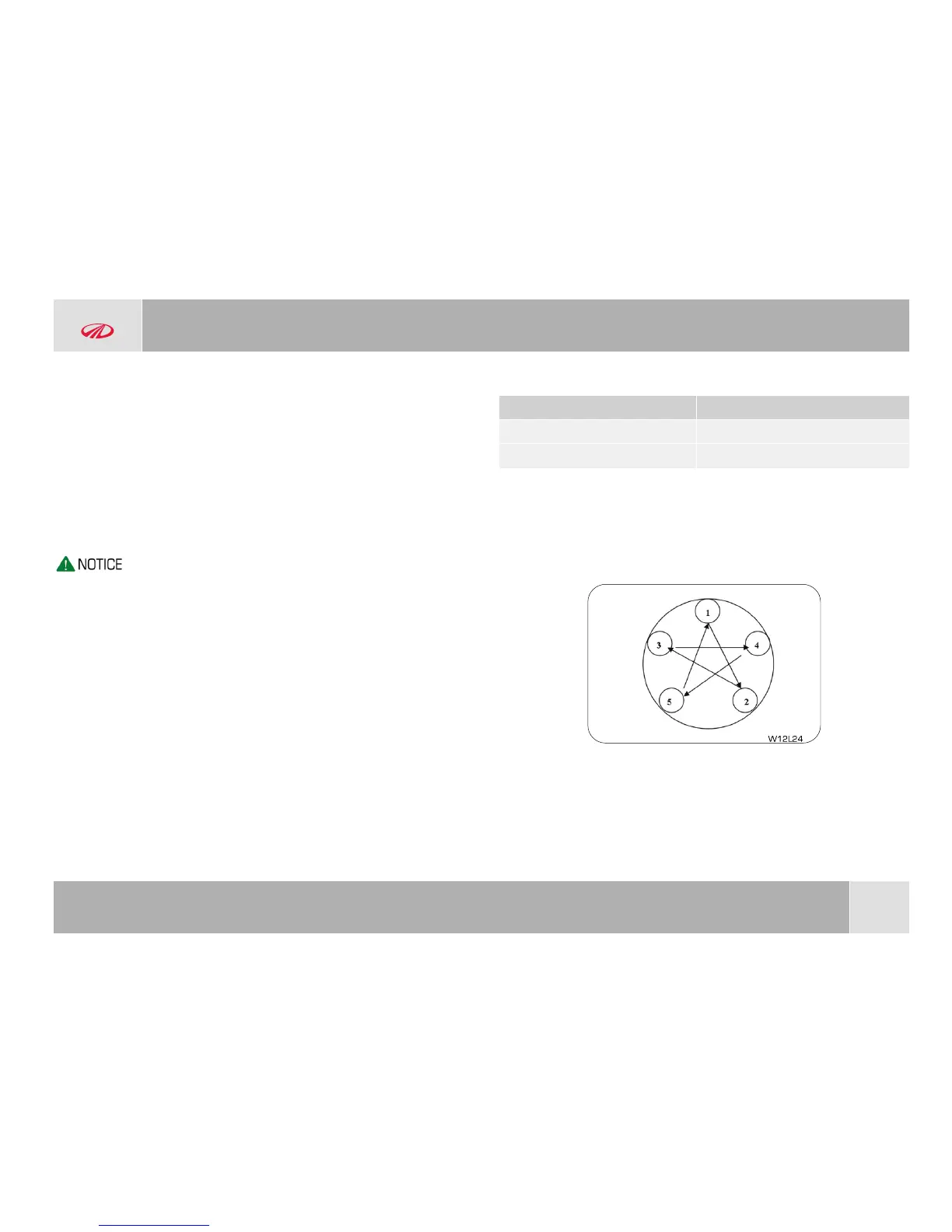© Copyright Mahindra & Mahindra Ltd. 082014
12-3
• Economy
• Ride Comfort and Vehicle Stability
Proper tyre inflation contributes to a comfortable and safe ride. Overinflating
produces a jarring and uncomfortable ride. Both underinflation and overinflation
affect the stability of the vehicle and can produce a feeling of sluggish response or
over responsiveness in the steering. Unequal tyre pressures can cause an erratic
and unpredictable steering response or may cause the vehicle to drift left or right.
Improper inflation pressures can cause uneven wear patterns to develop across the
tyre tread. These abnormal wear patterns will reduce the tread life resulting in a
need for earlier tyre replacement. Under inflation also increases tyre rolling
resistance and results in higher fuel consumption.
The proper cold tyre inflation pressure is listed in the tyre Label (Vehicle
Placard), located on the front passenger side inner B-pillar.
12.4.1 Tyre Change/Replacement
• Use only Mahindra recommended tyres for replacement
• Never use second hand tyres or re-moulded tyres
• At the time of replacement, Mahindra recommends all four tyres or at least both
front or rear tyres to be replaced at a time as a set
• When a tyre is replaced, the wheel should always be balanced
• When replacing a tubeless tyre with a new one, the air valve should also be
replaced with a new one
12.4.2 Wheel Nut Torque
Wheel Torque (Nm)
Steel 120 +/- 10
Alloy 120 +/- 10
• Re-torqueing of wheel nuts as shown in the specification sheet is recommended
after the initial 1500 km run (especially for alloy wheels) after replacement of
tyres
• Re-torqueing as per specification must be done after every 10,000 kms
• In case of replacement of the wheel nut, use genuine Mahindra recommended
parts

